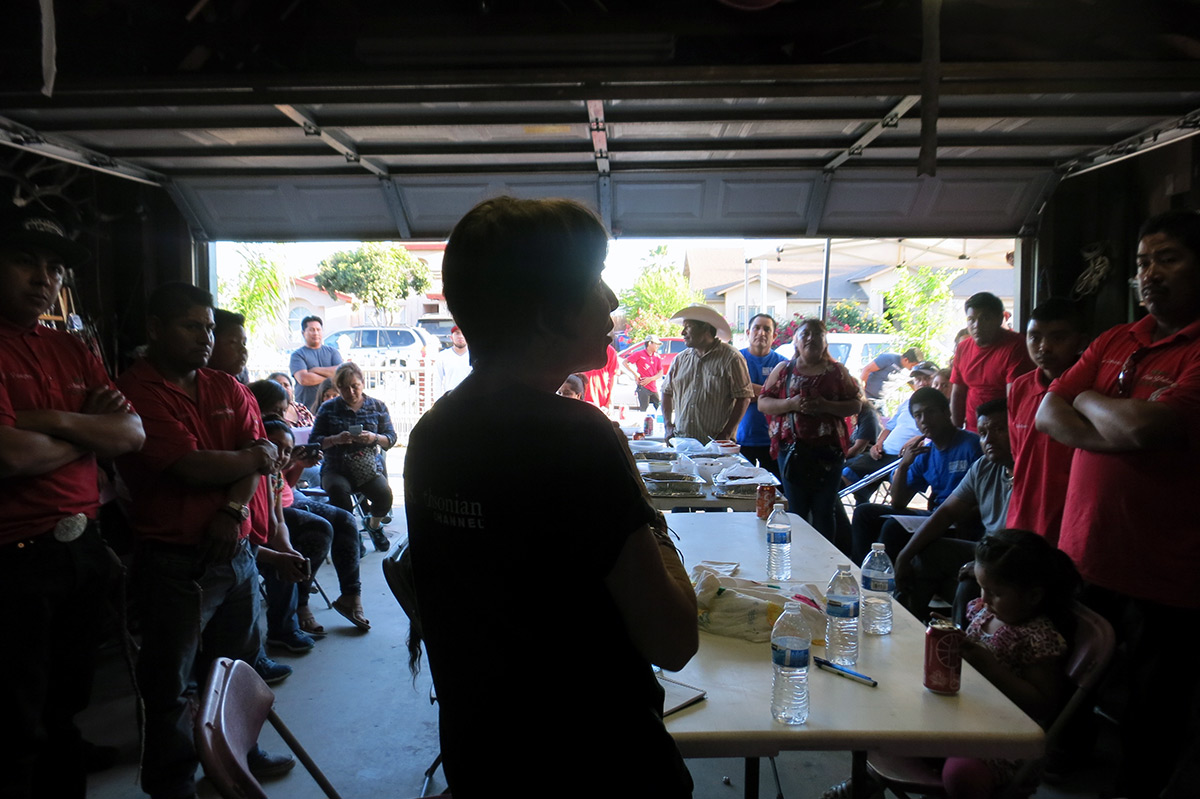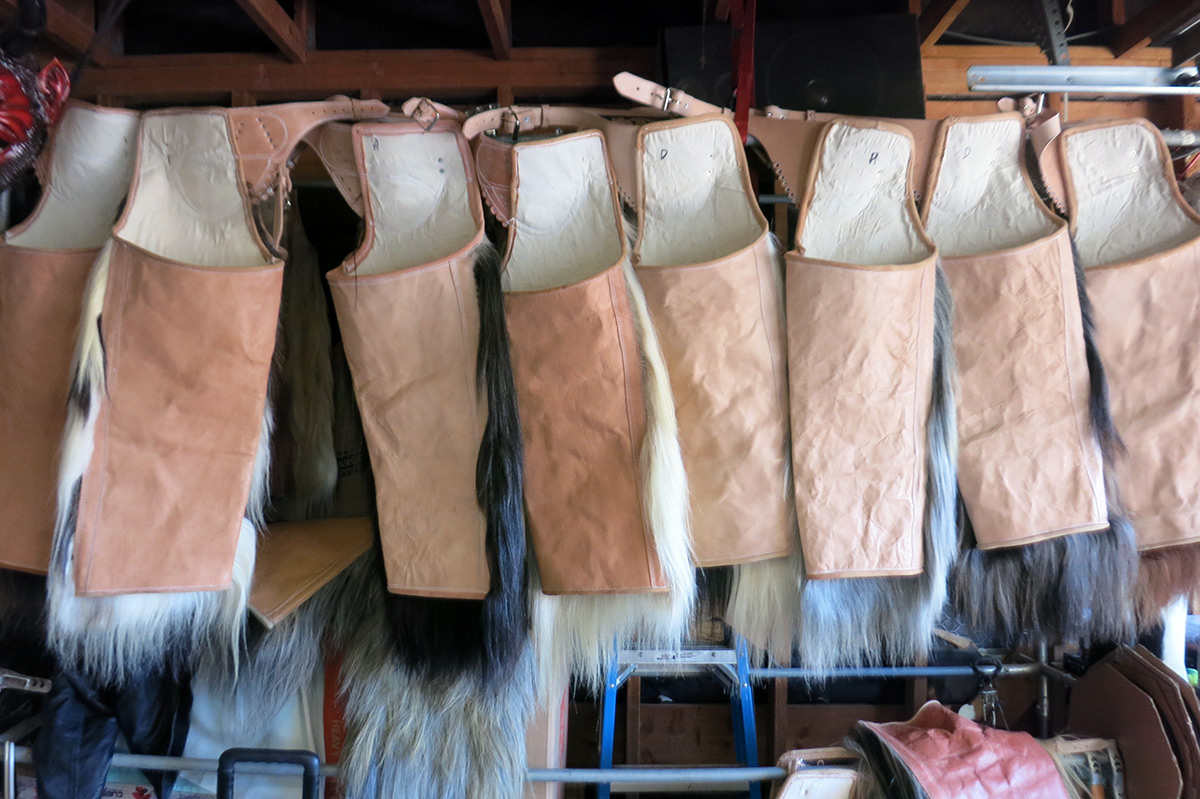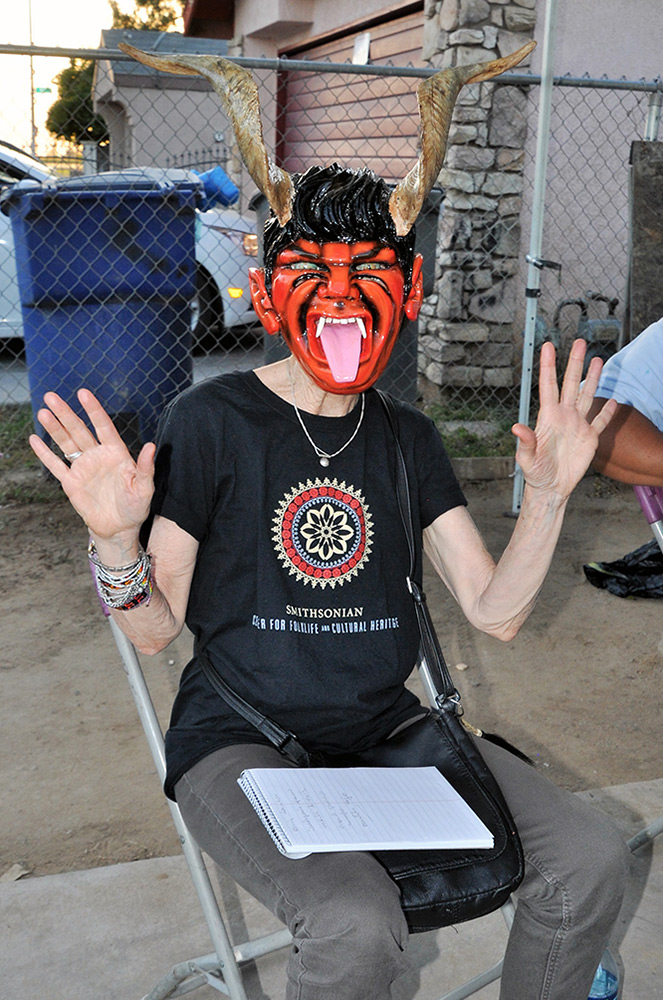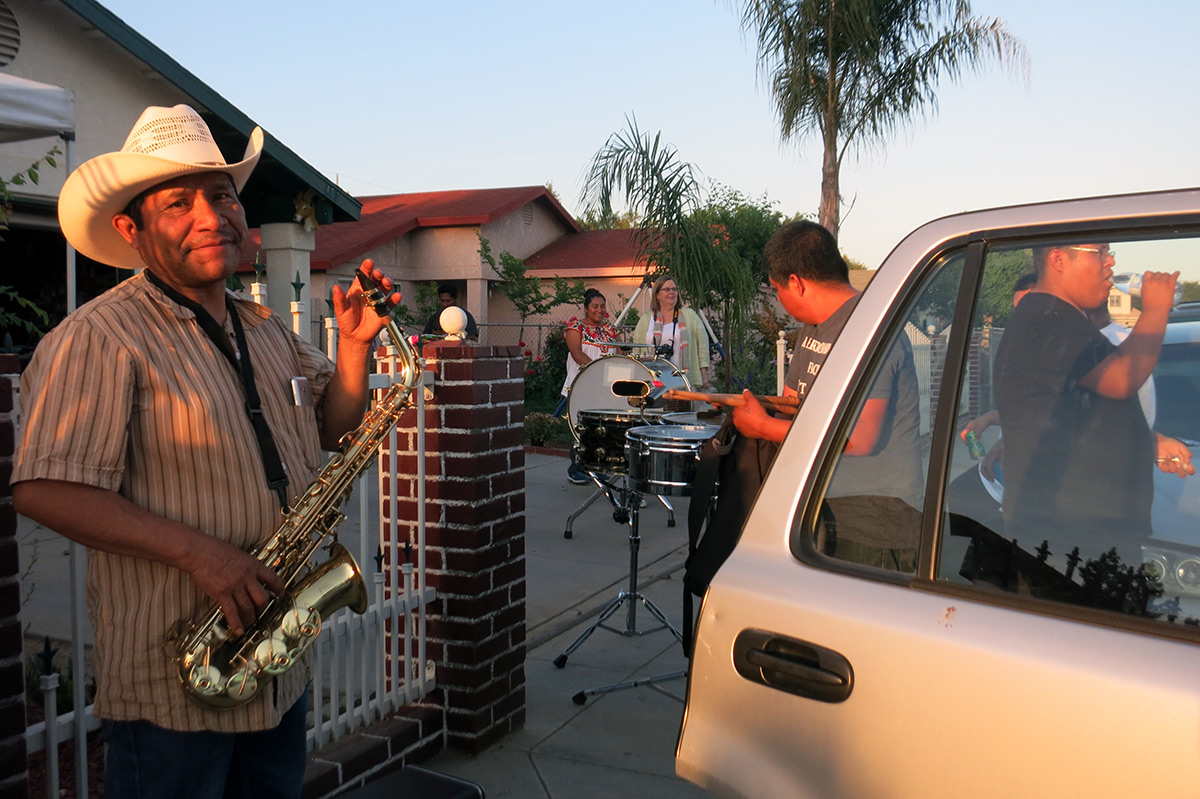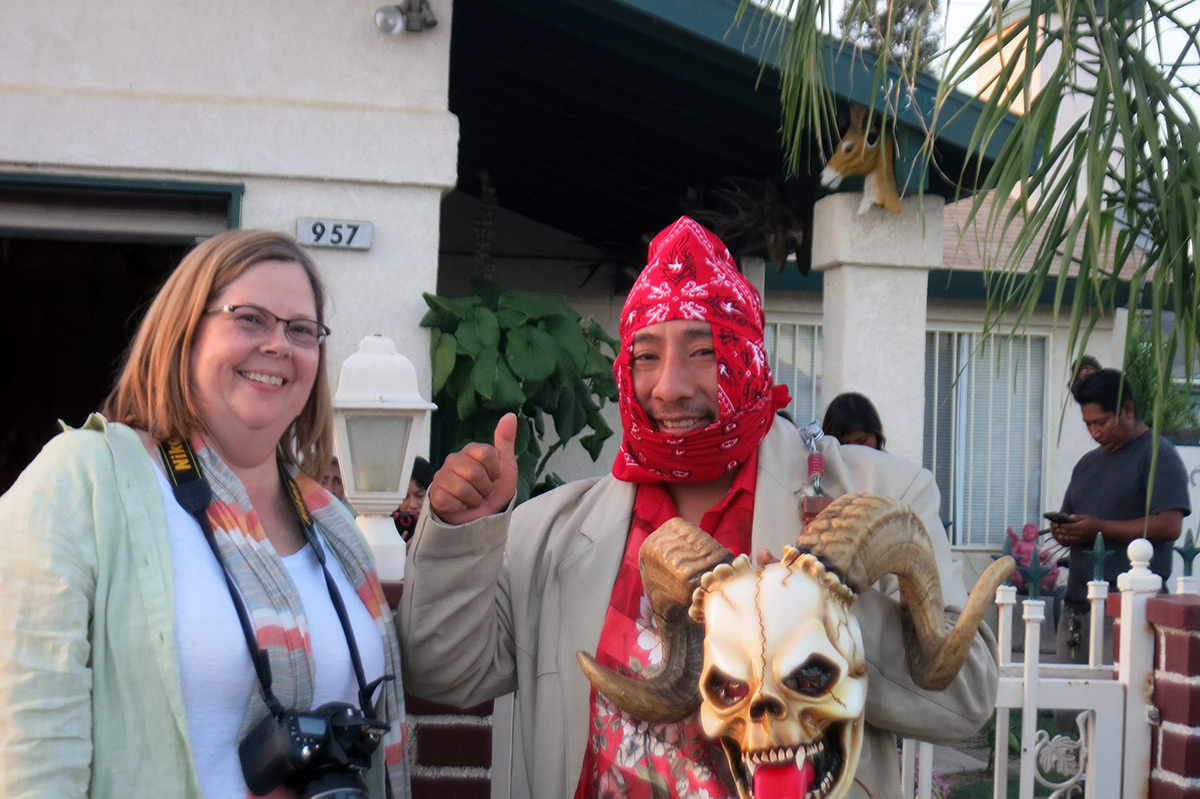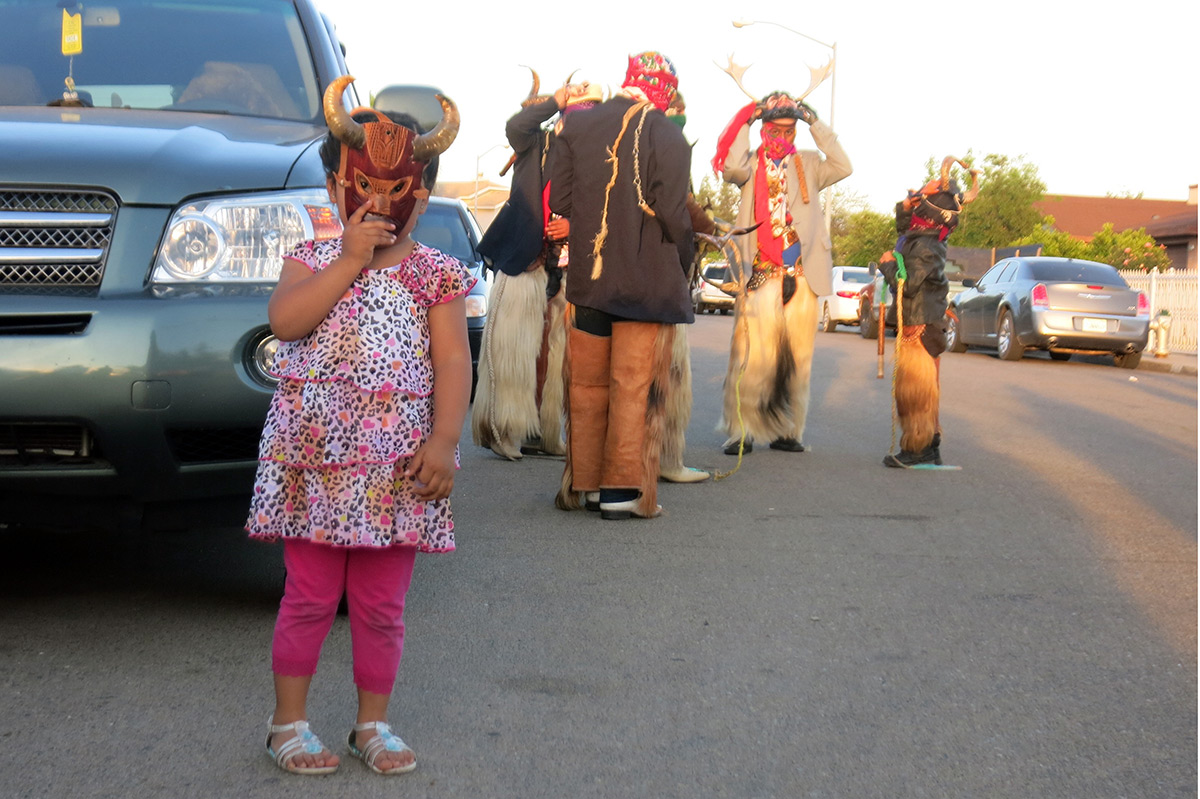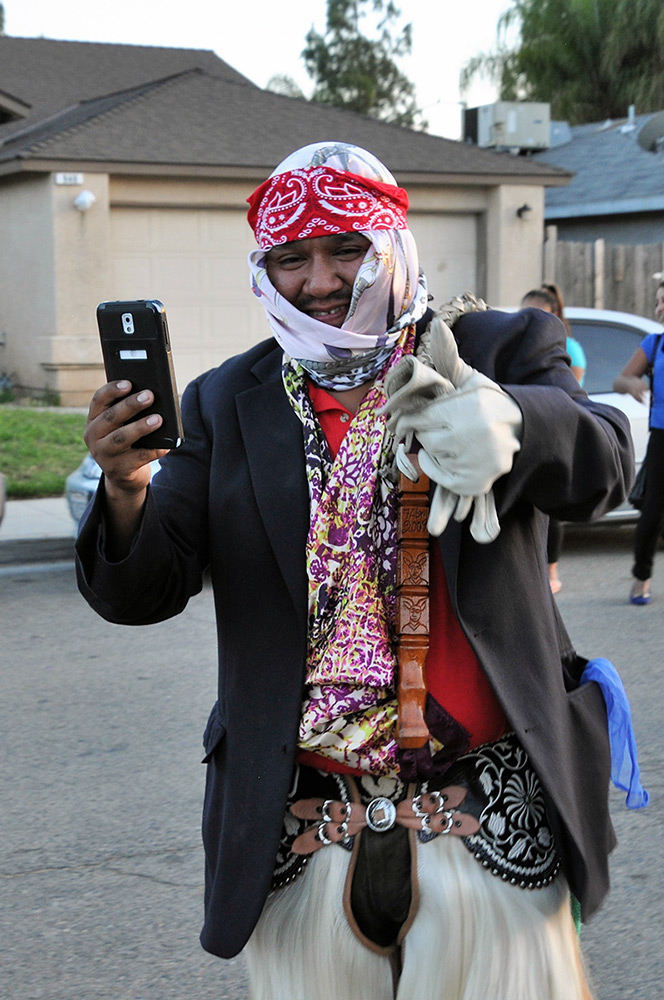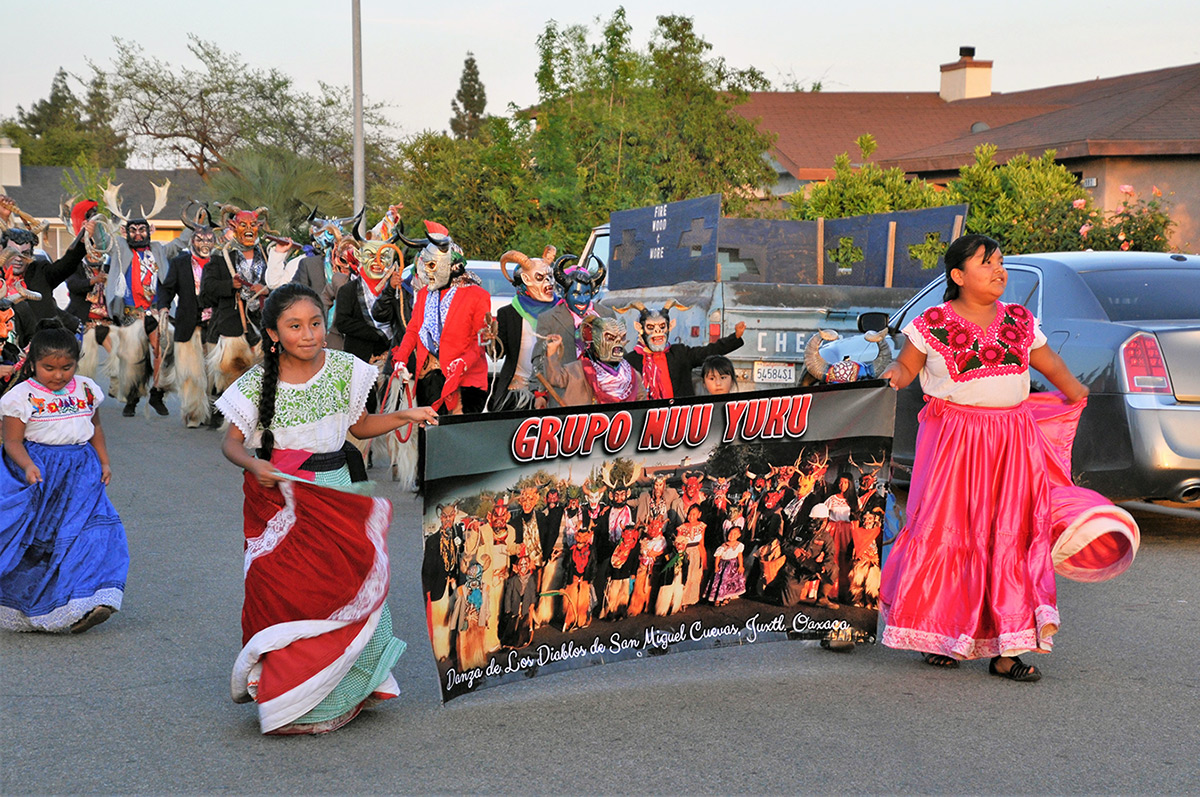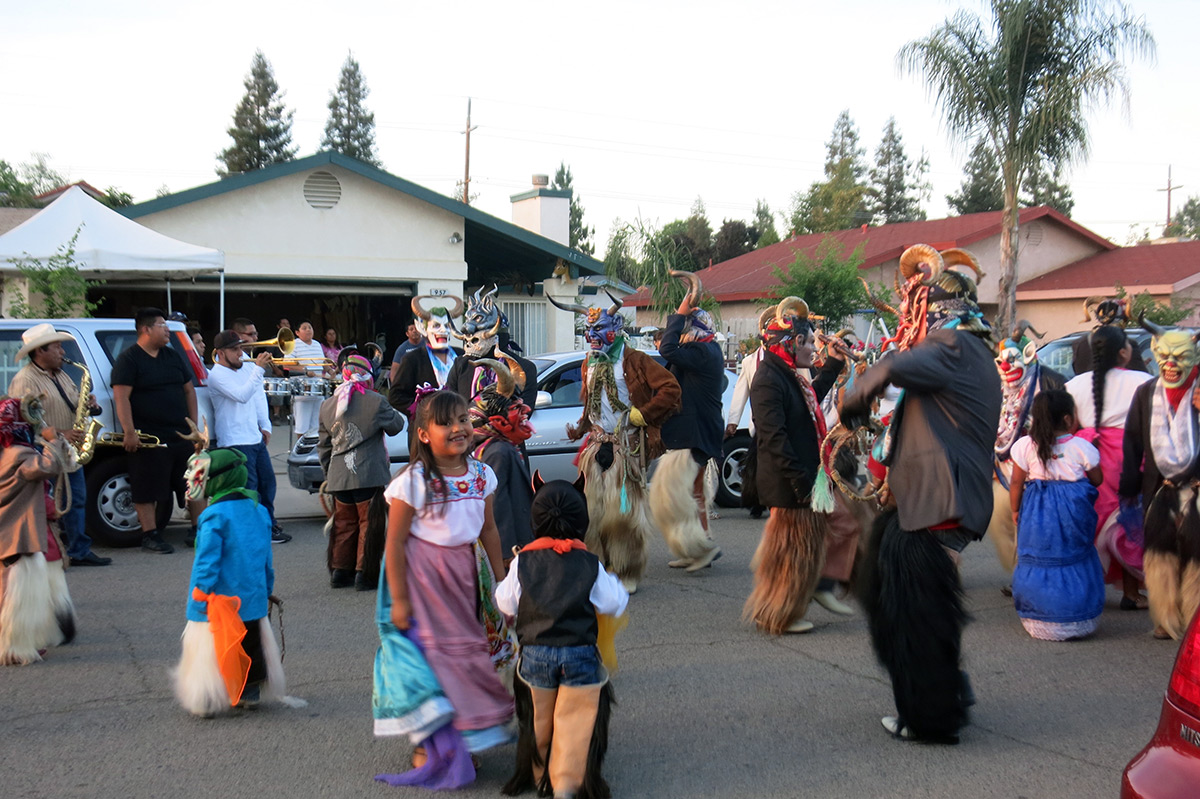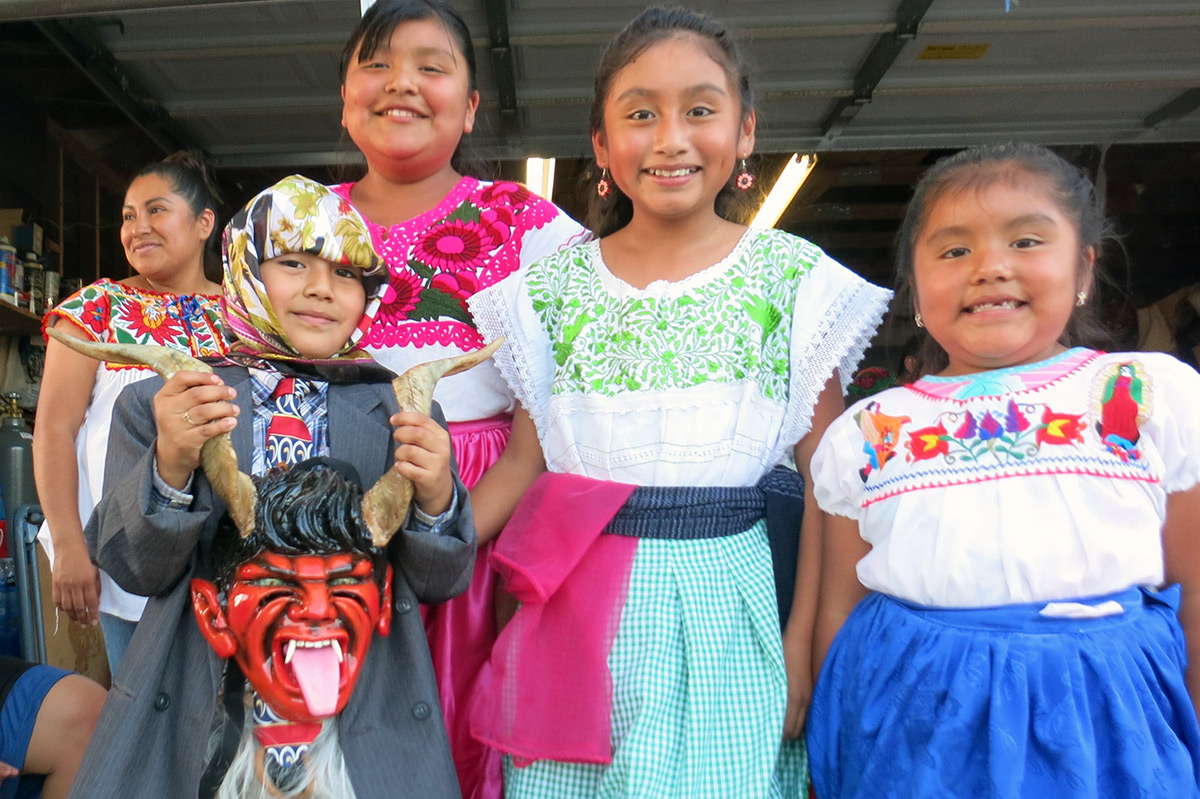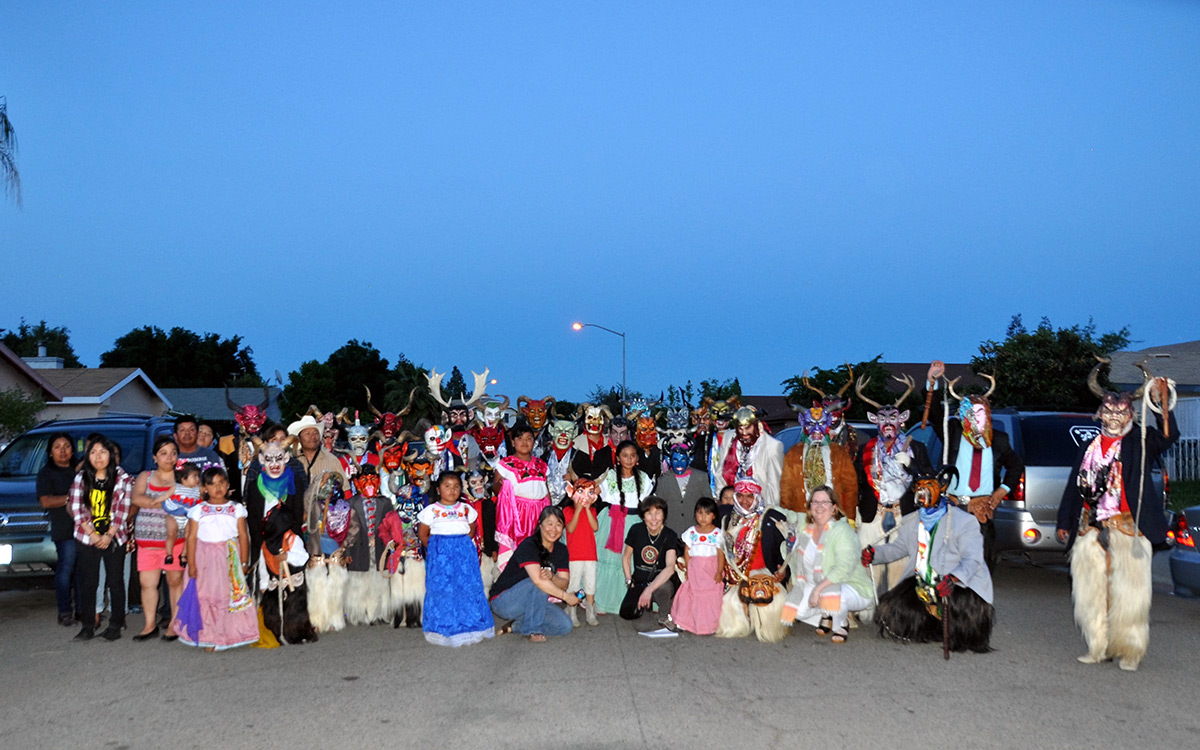A Visit with the Mixteco Community in Fresno, California

Leer esta entrada de blog en español
In the agricultural heart of California’s San Joaquin Valley, stretching 250 miles from Stockton in the north to Bakersfield in the south, two groups of artists uphold the performance traditions of their Mixteco communities. Most of the members of Grupo Nuu Yuku/Danzantes de los Diablos and Banda Brillo de San Miguel Cuevas share family ties to the town of San Miguel Cuevas in Oaxaca, Mexico. Some have come to Fresno, California, more recently; many were born and raised there.
Although they are independent groups, they often perform together, which you can see this summer at the 2016 Folklife Festival. They will share stories about how they are preserving cultural heritage in their California communities and a variety of musical styles. Through dance traditions and dramas, they will honor their patron saint and commemorate the battles between Moors (Muslims) and Christians during the Reconquista (from the eighth century through the fifteenth century) in Spain.
Sounds of California curator Sojin Kim and I traveled to Fresno in April to help the artists prepare for the Festival. We met in the home of Grupo Nuu Yuku co-director Diego Solano, joined by Amy Kitchener, executive director of our partner group Alliance for California Traditional Arts. Diego’s house was filled with members of the dance group, the band, their families, and homemade Oaxacan mole.
Click on images to enlarge and view captions.
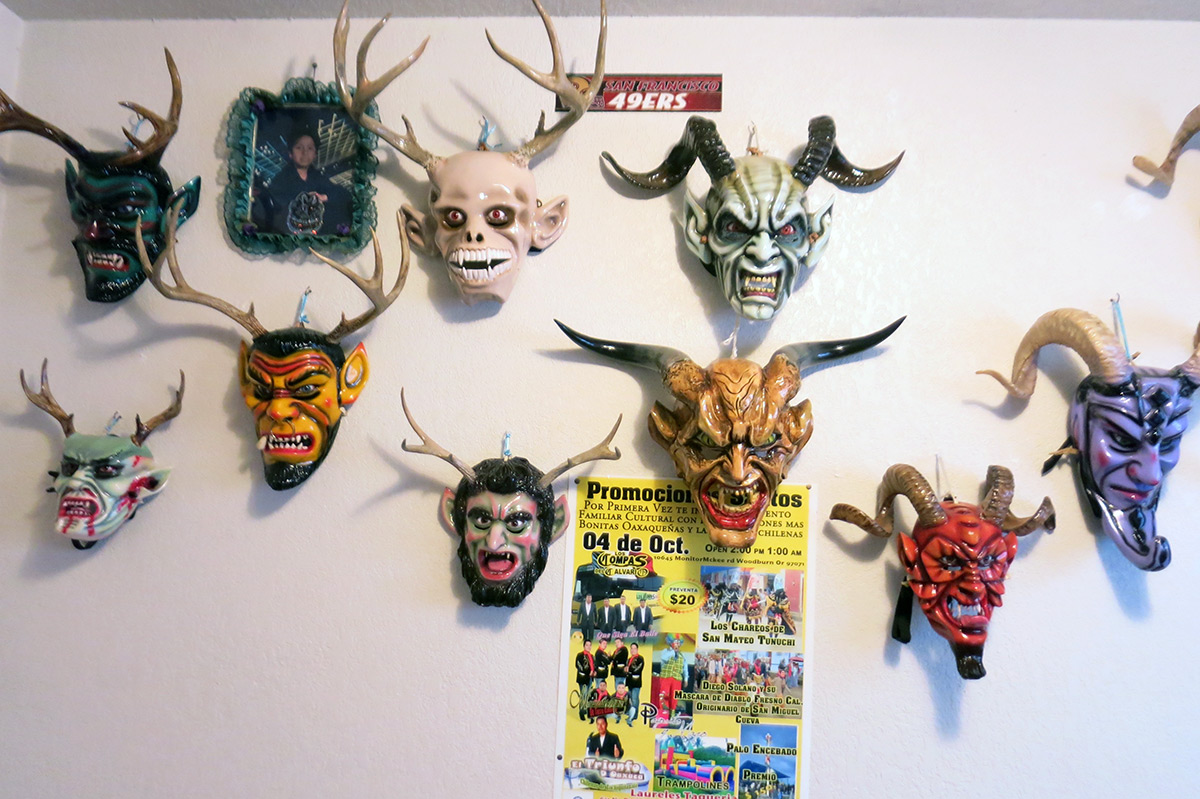
-
Diego’s dance mask collection includes several inspired by popular comic and movie characters. Most were made in Mexico but adapted by the local dancers to their preference—changing out the animal horns, for instance—and some are made by dancer Alexis Vásquez. Diego described the stories and meanings associated with each mask, like one super hero figure that holds special memories of his deceased brother.Photo by Sojin Kim, Ralph Rinzler Folklife Archives
-
We enjoyed dinner in Diego’s garage, furnished with long tables, which is also where the group holds meetings. It was quite a community feast.Photo by Sojin Kim, Ralph Rinzler Folklife Archives
-
The garage is adorned with masks and chivarras (chaps) made from different colors of long goat hair.Photo by Sojin Kim, Ralph Rinzler Folklife Archives
-
Olivia Cadaval tried on one of the masks.Photo by Amy Kitchener, courtesy of the Alliance for California Traditional Arts
-
After dinner, the bandleader Don Emiliano and the rest of the Banda Brillo began tuning up. Dancers walked out to their cars and changed into their costumes, stored in their trunks.Photo by Sojin Kim, Ralph Rinzler Folklife Archives
-
Amy Kitchener posed with Nazario Leon, one of the members of Nuu Yuku.Photo by Sojin Kim, Ralph Rinzler Folklife Archives
-
Among the many youth dancers, it was interesting to see how some young girls chose to dance as devils rather than in the festive dresses traditionally worn by female dancers.Photo by Sojin Kim, Ralph Rinzler Folklife Archives
-
Diego Solano, co-director of Nuu Yuku, took a recording of the performance to share on Facebook.Photo by Amy Kitchener, courtesy of the Alliance for California Traditional Arts
-
The performers all moved into the street to dance in a procession led by a banner announcing their group. Their name “Nuu Yuku” is the Mixtec word for their hometown of San Miguel Cuevas. Occasionally they moved aside to make way for passing cars. On the whole, the neighbors were very accommodating.Photo by Amy Kitchener, courtesy of the Alliance for California Traditional Arts
-
The Nuu Yuku dance troupe and Banda Brillo are magnets for the community, bringing together Mixteco families in the area. They regularly gather for community celebrations. According to Diego, participation in these performances provides an important way to keep the young people engaged in their own culture and traditions.Photo by Sojin Kim, Ralph Rinzler Folklife Archives
-
After their performance, young dancers from Nuu Yuku posed with their friends.Photo by Sojin Kim, Ralph Rinzler Folklife Archives
-
Many members of Banda Brillo are related—several of the musicians are sons of bandleader Emiliano Bernardino Flores. It was lovely to see family members and people of all ages participate in some way. Family and friends are involved in cooking and designing the girls’ dresses. A little girl no older than four danced away with abandon during the procession.Photo courtesy of the Alliance for California Traditional Arts
These community connections extend beyond the immediate area. During our visit, artists and family members took photos and videos of our presentations and the post-dinner performance. Immediately, they were already posting reports on Facebook—reaching not only other Mixtecos in the San Joaquin Valley, but, more importantly, Mixteco communities back home. By the next day, a video of me describing the Folklife Festival had over 400 views.
Olivia Cadaval is a curator at the Center for Folklife and Cultural Heritage and part of the curatorial team for the Sounds of California program at the 2016 Folklife Festival.


